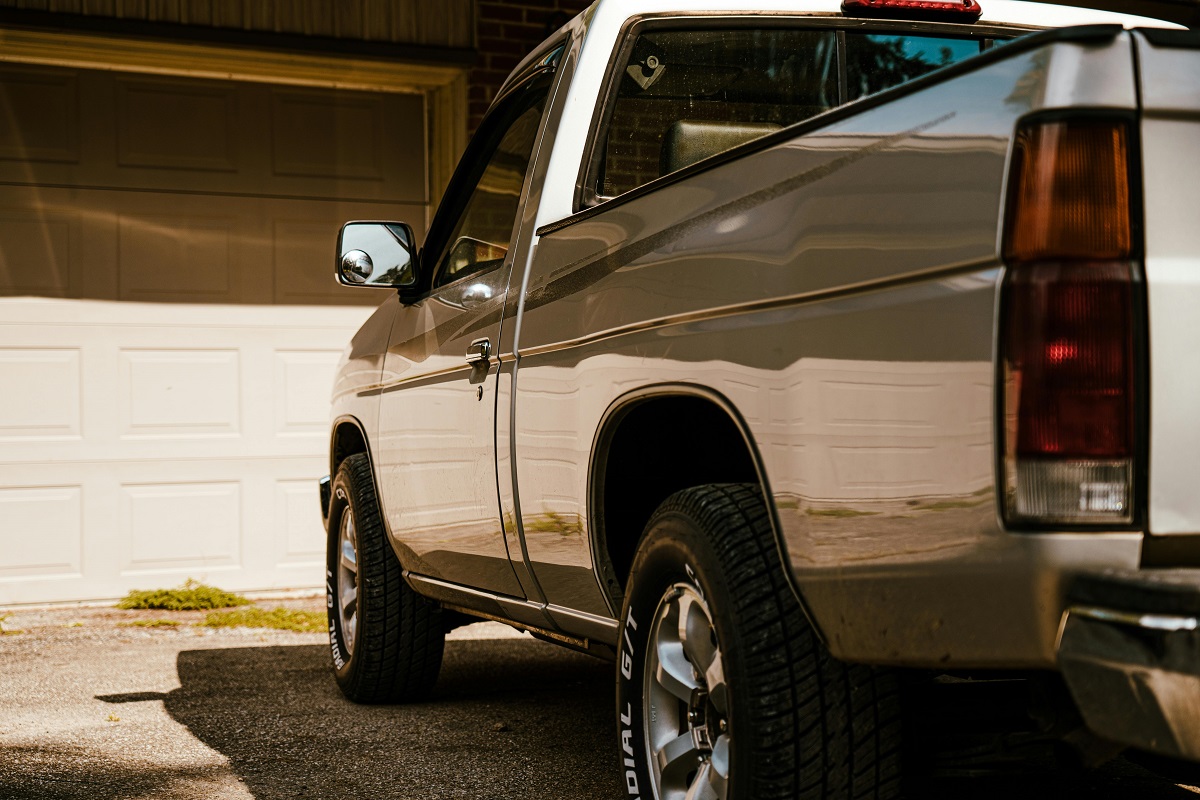
A shaking steering wheel is more than just a distraction—it’s a message from your vehicle. Whether it starts while braking, driving on the highway, or accelerating from a stop, this kind of vibration is often a sign that something is off in your car’s mechanical systems. Left unresolved, the shaking can lead to uneven tire wear, poor handling, increased fuel consumption, and even dangerous driving conditions.
In this in-depth guide, we’ll break down the most common causes of steering wheel shaking, how to identify when it’s happening and what it means, and what you can do to fix or prevent it. From tires and suspension to brakes and alignment, your vehicle is constantly giving you clues—you just have to know how to read them.
What Does Steering Wheel Shaking Actually Mean?
When your steering wheel starts to shake, it’s rarely just a surface-level issue. Vibrations typically originate from one or more moving parts that are either misaligned, worn, unbalanced, or failing.
These are the core systems that commonly cause shaking:
- Tires and wheels — Issues with balancing, tread, or damage
- Braking system — Warped rotors, worn pads, or sticking calipers
- Suspension and steering components — Worn tie rods, ball joints, or bushings
- Axles and drivetrain — Often if shaking worsens during acceleration
- Wheel alignment — Misalignment can cause uneven contact and vibrations
It’s important to consider how the vibration feels—whether it’s pulsing, continuous, rhythmic, or erratic. These characteristics help narrow down what part of the car is affected.
When Does the Shaking Start? Timing Is a Diagnostic Tool

One of the simplest but most effective ways to narrow down the issue is to pay attention to when the shaking occurs. Here’s how to interpret the clues based on driving conditions:
1. Shaking During Acceleration
If the wheel begins to shake when you’re accelerating, especially from a stop or during moderate throttle input, the issue may lie in the drivetrain or wheel assembly. Causes include:
- Bent rims — Often from potholes or curb hits, causing imbalance
- Worn CV joints — Especially on front-wheel drive cars
- Loose lug nuts — A serious safety hazard that can cause the wheel to wobble
- Tire separation — Internal damage to the tire’s belts or structure
The key clue here is that the shaking starts or worsens as the engine puts power through the drivetrain. If it smooths out at higher speeds, this further points to a rotational imbalance.
2. Shaking at Highway Speeds
A classic symptom of wheel imbalance, steering wheel shaking that kicks in at 55–75 mph but disappears at lower speeds is often due to:
- Tires out of balance — Weights may have fallen off or weren’t installed properly
- Worn tire tread — Uneven or cupped wear can generate vibration at high speeds
- Out-of-round tire — A tire that isn’t perfectly circular can bounce on the road
- Improper tire pressure — Even small PSI differences across one axle can cause steering issues
If this is your situation, the fix may be as simple as a tire balance or rotation. However, persistent high-speed vibrations can accelerate tire wear and affect steering responsiveness.
3. Shaking Only When Braking
This is often a dead giveaway that the problem lies in your brake system. If your steering wheel vibrates when you apply the brakes, look into:
- Warped brake rotors — Uneven rotor surfaces lead to pulsing through the steering column
- Worn brake pads — Uneven wear or low-quality pads can make contact inconsistent
- Sticking brake caliper — A caliper that doesn’t fully release will create constant drag and heat
- Contaminated brake surfaces — Oil, rust, or debris can disrupt the braking surface
Brake-related shaking is usually felt in both the hands and through the brake pedal. In most cases, it starts small and worsens over time, so early diagnosis is key.
Could It Be a Tire Issue? Almost Always Worth Checking
Tires are one of the most frequent sources of steering wheel vibration—and also one of the easiest to check. That’s why incorporating tire pressure checks and visual inspections into your daily maintenance plan can go a long way in preventing surprises down the road.
Common tire-related problems that cause shaking include:
- Tire imbalance — Even a small weight difference can result in a rhythmic wobble at certain speeds
- Flat spots — Tires that sit too long can develop hard spots, especially in cold climates
- Uneven wear — Often a result of bad alignment or lack of rotation
- Tire defects — Broken internal belts can’t always be seen but may show as lumps or bubbles
- Mismatched tires — Using tires of different sizes or wear levels on the same axle can lead to handling issues
A quick inspection of the tire tread, sidewalls, and pressure can reveal a lot. If tires are the issue, rotating or replacing them is usually a straightforward fix.
Is Your Car Out of Alignment? Watch for These Signs
Alignment issues don’t just affect how your car handles; they also put stress on tires and suspension parts, which can cause vibrations over time. Even being slightly out of spec can create irregular contact with the road surface and steering instability.
Clues that point to poor alignment:
- Steering wheel off-center when driving straight
- Car pulls to the left or right
- Uneven wear on tire edges
- Shaking that gets worse on certain road surfaces
Wheel alignment is a common fix after hitting a curb, driving over potholes, or replacing suspension parts. Most shops can provide a computerized alignment check with a printed report showing your vehicle’s specifications.
Are Your Brakes Trying to Tell You Something?
If braking is causing the shaking, pay close attention to the feel of the brake pedal and the steering wheel. Warped rotors are one of the most common causes, and they often feel like a rapid pulsing or fluttering.
More serious brake issues may also result in:
- Heat spots on rotors
- Brake fluid leaks
- Grinding or scraping sounds
- Soft brake pedal feel
Over time, these symptoms can reduce braking efficiency and increase stopping distance. If you feel shaking while braking, don’t wait—get your system checked.
What About Suspension and Steering Components?
Suspension wear tends to develop gradually, which can make it easy to overlook. But when it reaches a critical point, the resulting play or looseness in the system can cause serious vibration.
Watch for:
- Clunking over bumps
- Vague or unresponsive steering
- Vehicle sways or leans on turns
- Visible grease or wear at joints
Common failing parts include:
- Tie rod ends — Connect the steering rack to the wheels
- Ball joints — Allow the wheels to move independently
- Control arm bushings — Help absorb road impacts
- Steering rack mounts — If loose, they allow excessive movement
If these components are to blame, the shaking will often worsen when cornering or going over uneven pavement.
Is It Possible the Drivetrain Is Involved?
While less common, vibration during acceleration could stem from drivetrain components—especially on vehicles with front- or all-wheel drive.
Common drivetrain-related issues include:
- Worn CV (constant velocity) joints — Often accompanied by clicking sounds when turning
- Bent or imbalanced driveshaft — Especially on rear-wheel drive vehicles
- Damaged engine or transmission mounts — These can’t absorb vibration like they should
- Loose or misaligned motor components — Can transmit shaking directly into the cabin
You’ll usually feel these types of vibrations not just in the wheel, but throughout the floor or seats. They’re most noticeable under heavy throttle.
How to Troubleshoot Steering Wheel Shaking at Home

Use this checklist to identify what might be causing the issue:
- Tire inspection — Look for bubbles, uneven wear, missing weights
- Tire pressure check — Confirm all four tires are inflated correctly
- Road test — Take note of when the shaking begins: during braking, highway speeds, or acceleration
- Brake feel — Listen for grinding and feel for pulsation in the brake pedal
- Look underneath — If safe, inspect CV boots, suspension joints, and tire wear patterns
- Steering behavior — Does the car pull to one side? Is the wheel centered?
Document what you observe so you can explain it clearly to a professional.
What Will It Cost to Fix Steering Wheel Shaking?
Fix costs vary depending on what’s wrong. Here’s a general breakdown:
| Cause | Estimated Cost |
| Tire balancing | $40–$100 for all four |
| New tires | $300–$800 total |
| Brake pad and rotor replacement | $250–$600 per axle |
| Wheel alignment | $80–$150 |
| Suspension component replacement | $200–$1,000+ depending on part |
| CV joint/axle replacement | $400–$800 |
These are rough estimates and can vary based on your location, vehicle make, and labor rates.
Can the Road Itself Be Causing the Shaking? Don’t Rule It Out
Not every case of steering wheel shaking stems from something wrong with your vehicle. In fact, road conditions can play a major role in how vibrations are transmitted to your hands—especially if your suspension is already worn or your tires are less than perfect.
Here are some environmental or road-related factors that can either trigger or exaggerate steering wheel shaking:
1. Poorly Maintained Roads
If your daily commute includes cracked pavement, potholes, or roads with ripples (commonly called “washboarding” on gravel or neglected roads), those imperfections can create consistent feedback through your steering wheel. While occasional jostling is normal, repeated impact:
- Accelerates wear on suspension components
- Can lead to tire imbalance or damage
- Worsens preexisting alignment issues
2. Grooved or Textured Pavement
Some highways have intentionally grooved surfaces to improve drainage or traction. These grooves can create a buzzing or shaking sensation in the wheel, especially if your tires are wide, worn unevenly, or misaligned. The effect may disappear when you switch lanes or transition onto a smoother surface.
3. Expansion Joints and Bridge Crossings
You may notice a brief shaking sensation when driving over metal grates or expansion joints on bridges. This is normal to some extent but can become more pronounced if:
- Your suspension system isn’t absorbing impact correctly
- Your steering linkage has excessive play
- Your wheels or tires are already slightly out of balance
4. Recent Road Work or Loose Debris
Freshly resurfaced roads or areas with scattered gravel and debris can make the vehicle feel unstable. Small rocks can even lodge into the tread and create temporary imbalance or noise. If the shaking starts suddenly after driving through a construction zone, it’s worth checking for:
- Stuck debris in the wheels or brakes
- Minor tire damage
- Bent rims from a hidden pothole or impact
Final Thoughts: Don’t Ignore the Signs
A shaking steering wheel is your car’s way of saying something needs attention. The good news? Many of the causes are routine wear-and-tear items that can be caught early and fixed without breaking the bank.
Whether it’s your tires, brakes, alignment, or suspension, diagnosing the issue starts with paying attention. Use the clues—when it shakes, how it feels, and what other symptoms you notice—to guide your next step.
Ignoring the problem only leads to more damage and higher repair bills down the road. If you’re unsure, get a second opinion from a trusted shop. A smooth, quiet, and steady ride is worth it.
